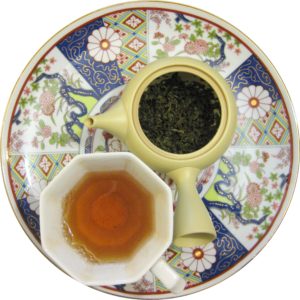Best Tips On Buying Tea
By Tea Lover
A few years ago Consumerist covered the story of a Teavana consumer who was unable to replicate the in-store tea tasting experience when steeping the same tea at home. With some follow-up, the consumer discovered the steeping instructions she followed on the side of the package could not yield the result delivered at the store tasting.
This can be a common problem. The glimmer of a tea fades when it is brought home. Factors like ambiance, water character, and steeping methods can all contribute to unmet expectations.
In such cases, the degree of disappointment may be more acceptable if the tea doesn’t taste vastly different, or if the price-to-satisfaction ratio still leaves you feeling that you got a good bargain. A little let-down in a daily drink tea may be tolerable.
But what if you are considering the purchase of a special occasion or “investment-grade” tea? Sometimes you will want to find a rarer gem to drink on special occasions or to impress others. What can you do in such cases to make sure your tea does well when it leaves the confines of the store?
There are a few things that can be done to improve your chances of taking home a tea you can remain satisfied with. Here are a few pointers I have collected over the years. Little to no research is readily available on the subject, so much of this is based on my travels and experience as a tea consumer and on trips to origin as a professional buyer.
Water
Find out what you can about the water used. Taste the water before you taste the tea. The mineral content of the water can have a profound effect on the tea to invigorate or flatten its profile. Many other sources have already touched on this subject, so I will avoid expounding unless requested so in the comments area.
The vessel used

Whenever appropriate, prefer straightforward teaware like porcelain gaiwans and professional cupping sets. I have even been advised to and carried my own Chinese-style porcelain spoon to tastings in Taiwan. Clay pots can affect the taste and texture of teas by absorbing components from the tea or by contributing elements to it.
Steep the tea yourself
Learn from the purveyor’s recommendations, but steep the tea in a way that pushes the tea to its limits. Some teas get under-steeped to prevent their flaws from coming out. It is often the case that higher quality teas have less or no bitterness even if they are over-steeped.
Taste more than 4ml
(about one teaspoon) of the tea at one sip when possible. While the slurp method of tea tasting remains popular, there is actual scientific research suggesting that saliva neutralizes the bitterness of liquid volumes of 4ml or less. This would mean a small sip would give a less than complete picture of the tea’s profile. If you are in a situation where you have to use a spoon, it may be advisable to combine 2 or more spoonfuls in your mouth to evaluate the tea.
Taste at different temps
Taste the tea when it is hot, when it is warm, and when cool. Aroma, sweetness, and flavor profile can change as a tea cools. When trying to replicate an in-store tea experience, you will want to note the general level of warmth of the tea.
Steep the tea more than once
to see how it changes. Just as temperature affects the characteristics of one steeping, you will want to see how steepings differ. You will also want to know how many good steepings you can get from the leaves.
Buy a sample and wait if necessary
I know a tea store owner who buys smaller volume from a producer. He then tests that tea for a year seeing how it will change (and how his reaction to it will change). He then buys more the subsequent year, having saved enough from the previous year to see how the 2 years compare. This process reveals how the growing season affected each tea, but also reveals the tea producer’s skill in producing a consistent quality of product despite differences in harvest.
Storage
After carefully testing and selecting your new treasure, you will want to preserve it. I once heard a Taiwanese tea farmer remark that green tea fears moisture and wulong fears oxygen. There is some sense to the statement. His observation was based on how , years ago, lime was placed nearby containers containing green tea to reduce the moisture in the air surrounding green tea. For wulong teas, the logic seems to hold true as well. The process of making wulong exposes the natural oils within the leaves. These aromatic oils can diminish as they are exposed to air. Some wulong producers now package their teas in nitrogen to preserve the tea.
All of these factors may still not be enough to counteract the psychological impression a tea moment can initially create. Sometimes tasting a tea can create an impression that just never gets fully replicated.